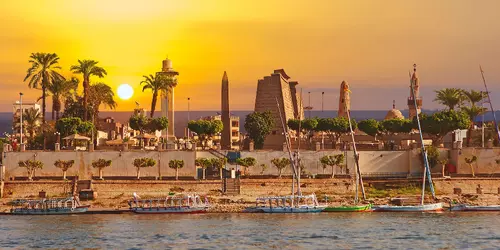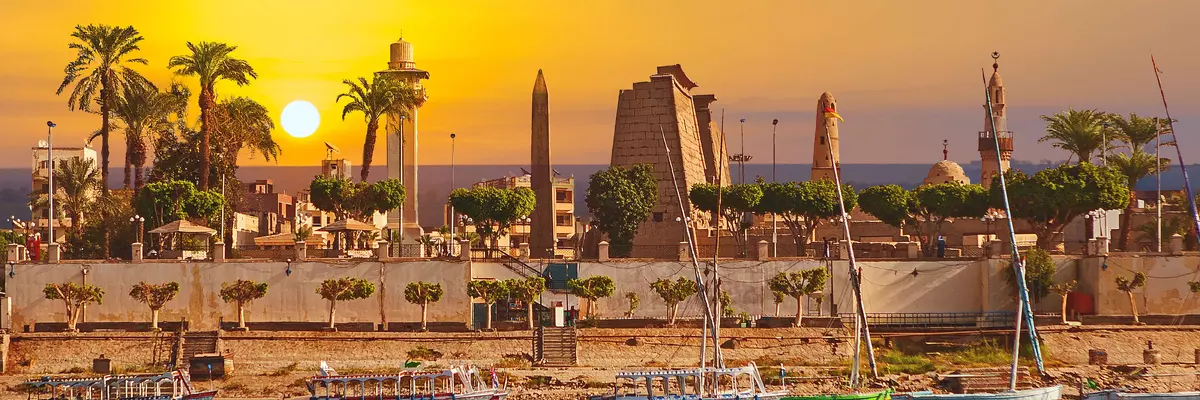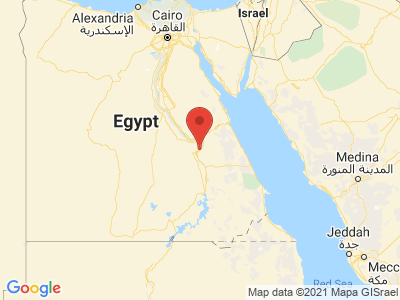Climate Table Luxor
Jan | Feb | Mar | Apr | May | Jun | Jul | Aug | Sep | Oct | Nov | Dec | |
|---|---|---|---|---|---|---|---|---|---|---|---|---|
| Max. Temperature | 23° | 25° | 27° | 35° | 39° | 41° | 41° | 40° | 39° | 35° | 29° | 24° |
| Min. Temperature | 5° | 7° | 10° | 16° | 20° | 23° | 24° | 23° | 21° | 17° | 12° | 7° |
| Sun Hours | 9 | 10 | 10 | 10 | 11 | 12 | 12 | 11 | 10 | 10 | 10 | 9 |
| Rain Days | 1 | 1 | 1 | 1 | 1 | 0 | 0 | 0 | 0 | 1 | 1 | 1 |
The climatic year of Luxor
Luxor is located in the upper Nile Valley and lies southeast of the approximately 120 kilometer long loop of the Nile River. Luxor has a subtropical desert climate characterized by low humidity and extremely low rainfall. Except for December, the probability of precipitation is zero days in all months. The weather is consistently hot and dry throughout the year, which is characteristic of the region on the eastern bank of the Nile in Upper Egypt. The Nile has created a strip of grassland up to five kilometers wide on both banks, which is used for agriculture. The Arabian Desert borders the eastern bank of the Nile at Luxor and separates the city from the Red Sea, which is about 170 kilometers away. To the west of Luxor, at a distance of 180 kilometers, is the oasis of Charga (Kharga) and other oases in the Libyan Desert. With its temples, museums, tombs and monuments a real Eldorado for all Egypt fans and hobby Egyptologists.
General information about Luxor
Luxor - once the capital of the pharaohs known as Thebes - is now home to two impressive structures from the city's heyday. Rising about two kilometers to the north of Luxor are the massive ruins of Karnak. Over thousands of years, generations of pharaohs allowed the imposing temple city to grow with sanctuaries and monuments, creating the largest temple complex in the world. On the bank of the Nile, in the middle of the city lies the Luxor temple, also called "southern palace". This temple complex was dedicated to the god Amun and was intended as his residence. Today it is one of the most important archaeological sites of Egypt and especially during the main season an impressive visitor magnet. On the west bank of the Nile, lined by mountains, lie the royal tombs in the Valley of the Kings, which are a fascinating experience for travelers to Egypt. Also worth a trip are the Memnon Colossi, two ancient Egyptian colossal statues in the Nile Valley near the Valley of the Kings. The 18th Dynasty mortuary temple of Hatshepsut is the best preserved temple near Luxor. The idiosyncratic architecture of this so-called million-year house leaves an unforgettable impression. Other worthwhile sights include the Luxor Museum and the Mummification Museum. A light refreshment is offered by the Nile with its excursions on traditional feluccas. If you want to admire Luxor from above, take a ride in a heated air balloon.
Tourism Luxor
Luxor has hot temperatures and low humidity all year round. The coldest month is January, but it is still pleasantly warm. However, it gets very chilly during the nights. The actual winter months between December and March are the most pleasant time to visit Luxor. Temperatures are pleasant and humidity is around 50 percent. From April up to and including the end of October, temperatures skyrocket into the characteristic values of a subtropical desert climate and humidity drops below 30 percent.
August is the hottest month, with enormous differences between day and night temperatures. The probability of precipitation is zero percent throughout the year, except in December, when theoretically there can be a rainy day. The number of hours of sunshine is constant between eight and twelve hours a day throughout the year.


